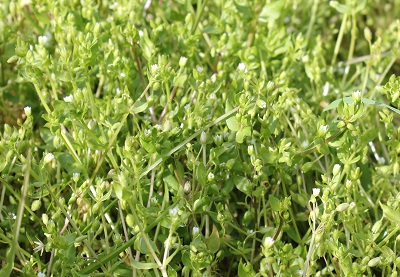Stubble Management for Grass Weed Control
29 August 2021There is not a single prescriptive course of action given there are so many farming and cropping systems each with differing objectives and timescales but, where stubble management is used for early grass weed control, certain principles in particular stale seedbeds (under the right conditions) can be effective in reducing the seed bank. Bromes, wild oats and ryegrass are three examples where stubble management can help. Tailoring stubble management to the dominant weed problem is the way to go.
Bromes
For all brome species, ploughing is more effective than stale seedbeds, but there are some differences between species when it comes to best management. For Sterile and Great Brome, where you are not ploughing then shallow-cultivating stubbles to only 5cm as soon after harvest as possible can be helpful. This will cover seeds and induce germination prior to spraying off. Leaving seeds on the surface will lead to dormancy and hence germination after drilling so obviously higher brome numbers in the following crop and back to the seed bank. In contrast for Soft, Meadow and Rye Brome, if not ploughing, leave stubbles uncultivated for at least a month after harvest where possible- in these brome species early cultivation will delay the breaking of dormancy making control pre-drilling more difficult.
Wild oats
Wild oats have a much more protracted germination than bromes and germinate from greater depths so cultural control methods involving stale seedbeds have a diminished effect. However, leaving freshly shed wild-oat seed for as long as possible on the soil surface after harvest may be beneficial, increasing seed losses through weathering and predation.
Ryegrass
Stale seedbeds should be employed as they will help reduce seed bank levels. It is important, especially prior to a winter crop, that this practice is partnered by moist soils and soil consolidation for optimum emergence ahead of a glyphosate application. In the absence of soil moisture, leave stubbles untouched until the soil is wetted sufficiently again. The same approach applies for blackgrass if present.
Weed management in oilseed rape
With the risks to oilseed rape establishment from flea beetles and slugs, there is a move away from pre-emergence herbicide applications to early post-emergence options. With metazachlor for broad leaved weed control, applying early post emergence will compromise weed control slightly but has the distinct advantage of allowing confirmation of an established crop before investing. Applying pre-emergence may slow crop emergence and therefore put the crop at greater risk in growing away from a flea beetle or slug attack. In the event of crop failure, a field treated with a metazachlor product, would need to be ploughed to 15 cm and then sown with wheat in the autumn, or left until the spring before re-sowing. If clomazone had been used, the field would need to be ploughed to 25 cm and only winter cereals or beans could be sown in the autumn, after 6 weeks had elapsed, or left until the spring before re-sowing.
Belkar is a new post emergence product containing Arylex and picloram and so also allows assessment of crop establishment before treating and for the reasons stated above is becoming a popular starting point for broad leaved weed control. If grass weeds are present both metazachlor or Belkar can be followed up with herbicide actives like propyzamide or carbetamide. with or without a second dose of Belkar. Cereal volunteers need to be taken out with a graminicide ideally by the 2 leaf stage if possible.
With all residual herbicides in oilseed rape, it is important to remember that the common rape herbicides are regularly being detected in water courses above EU drinking water limits. To help protect metazachlor, there are label restrictions – no more than 1000g/ha active ingredient applied to the same field over a three year rolling period and no more than 750g active per crop per season: e.g. 1.5 l/ha of a 500g a.i. of Butisan S.
Fiona Burnett SRUC for the Farm Advisory Service
Sign up to the FAS newsletter
Receive updates on news, events and publications from Scotland’s Farm Advisory Service

